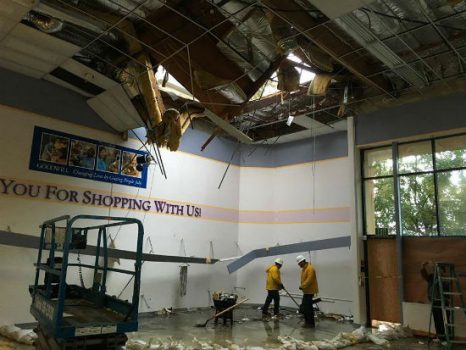Revitalizing the Appeal of Your Building: A Comprehensive Method to Water Damages Reconstruction and Improvement
Are you looking to bring back the elegance of your building after water damage? Our thorough technique to water damages repair and renovation will certainly help you revitalize your area. We'll examine the level of the damage, carry out reliable water extraction strategies, and dry and evaporate the affected areas.
Assessing the Degree of Water Damages
You'll need to very carefully check out all locations of your residential or commercial property to establish the degree of water damage. Look for any type of bending, buckling, or soft places, as these are indications of water damages.
Next, inspect the home windows and doors for any kind of signs of water intrusion. Seek water stains, rotting timber, or difficulty in opening and closing. Pay very close attention to the corners and sides, as these are common locations for water to leak in.
Check the pipes fixtures and appliances in your building. Try to find any leaks or water spots around sinks, commodes, showers, and cleaning makers. Don't fail to remember to inspect the supply of water lines and drainage pipelines for any signs of damages or leak.

Applying Efficient Water Removal Methods

Drying Out and Evaporating the Influenced Areas
Once you've removed the majority of the water, it is very important to immediately completely dry and evaporate the impacted locations to stop mold and mildew development and more damages. Wetness left behind can result in the growth of mold and mildew, which can cause health issues and structural damages. To begin the drying out process, open home windows and doors to increase air circulation. Preferably, use followers and dehumidifiers to aid quicken the drying process.
Ensure to remove any kind Our site of damp carpets, furnishings, and various other possessions from the affected locations. Putting them outside or in a well-ventilated area will assist them dry much faster. Use towels and mops to take in any type of staying water on the floorings and walls - water removal La Mesa CA. Pay special focus to corners and holes where moisture can conceal.
When the excess water has actually been eliminated, extensively clean the influenced areas with a disinfectant to stop the development of microorganisms and mold and mildew. Scrub any visible mold or mold with a blend of water and cleaning agent, and afterwards wash with tidy water.
Continue to keep water damage wood floor insurance claim track of the moisture degrees in the affected areas. Ideally, the moisture needs to be below 50% to stop further mold and mildew growth. If required, proceed running followers and dehumidifiers until the location is totally dry.
Fixing Damaged Structures and Products
Inspect the damaged structures and materials carefully for any type of fractures, bending, or indicators of deterioration. This step is vital in the procedure of fixing water damages and restoring the beauty of your residential or commercial property. Begin by extensively analyzing the walls, floors, and ceilings for any type of visible damage. Try to find fractures or bending that may have taken place as a result of the water intrusion. Pay attention to any signs of degeneration, such as peeling off paint or collapsing drywall. As soon as you have actually determined the locations of problem, it is necessary to resolve them without delay to avoid additional damage. Beginning by getting rid of any loose or damaged materials, such as decomposing timber or falling apart plaster. Replace these materials with brand-new ones to ensure the architectural integrity of your building. For smaller sized fractures or areas of deterioration, you can use patching substances or fillers to fix the damage. For more substantial damage, it is advised to get in touch with a specialist specialist that specializes in water damages remediation. They have the experience and tools required to repair and restore your home to its pre-damaged problem. Keep in mind, attending to the damaged frameworks and materials immediately is important to stop more wear and tear and make certain a successful restoration procedure.
Restoring the Appearances and Performance of Your Building
Beginning by reviewing the overall problem of your residential or commercial property and determining locations that need attention. Take a walk around your residential property and look for any indicators of damages or wear. Pay close attention to areas that are vulnerable to water damage, such as the cellar, restroom, and kitchen.
Once you have actually recognized the locations that need interest, it's time to begin restoring the looks and capability of your residential or commercial property. Begin by attending to any architectural problems. Repair any type of splits or damages to the wall surfaces, ceilings, or floorings. like this Change any type of deformed or damaged products, such as wooden boards or floor tiles.
Following, concentrate on restoring the visual allure of your residential or commercial property. Repaint the walls and ceilings with fresh, vibrant shades. Select shades that enhance the general motif and design of your property. Take into consideration including wallpaper or textured surfaces to develop an unique appearance.
Do not forget the performance of your residential property. Change any kind of out-of-date or defective components, such as faucets, lighting fixture, or home appliances. Install new floor covering if essential, picking materials that are resilient and simple to keep.
Conclusion
In final thought, you can revitalize the elegance of your residential property after water damages by taking a detailed method to repair and restoration. Don't let water damage moisten your spirits - take action and redeem the appeal of your residential or commercial property today.